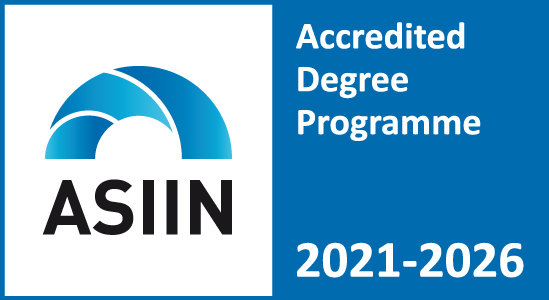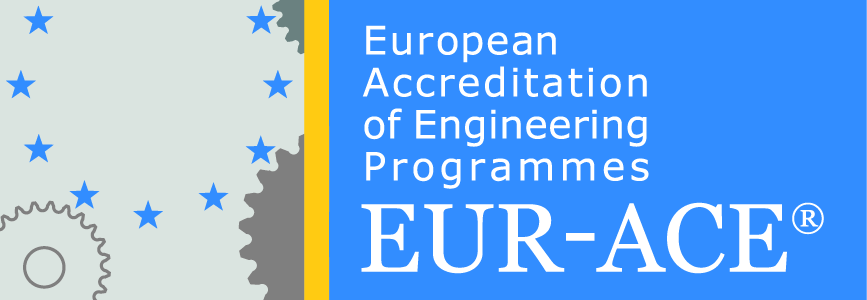| 1. Course Title | Electroacoustics | |||||||
| 2. Code | 3ФЕИТ05З014 | |||||||
| 3. Study program | KHIE | |||||||
| 4. Organizer of the study program (unit, institute, department) | Faculty of Electrical Engineering and Information Technologies | |||||||
| 5. Degree (first, second, third cycle) | First cycle | |||||||
| 6. Academic year/semester | III/5 | 7. Number of ECTS credits | 6.00 | |||||
| 8. Lecturer | Dr Branislav Gerazov | |||||||
| 9. Course Prerequisites | ||||||||
|
10. Course Goals (acquired competencies): Getting acquainted to and mastering the theoretical foundations of the formation, radiation and propagation of sound waves in open and closed space. Understanding the physiological mechanisms of sound perception. Capability for modeling complex acoustic systems, design and implementation of sound systems, design of acoustic improvement projects and noise insulation. |
||||||||
|
11. Course Syllabus: Formation and propagation of sound waves. Physical characteristics of sound. Sound waves. Electroacoustic and electromechanical analogies. Physiological and psychological acoustics. Sound waves in a closed space. Analysis of room acoustics, design of acoustic room improvements. Noise insulation. Speech and music. Music acoustics. Electroacoustic Transformers. Microphones. Basics of tone recording. Loudspeakers. Outdoor and indoor sound systems. Electroacoustic systems for preserving and editing audio. Ultrasound and its use. Aeroacoustics. Underwater acoustics. |
||||||||
| 12. Learning methods: Lectures with invited guest speakers, auditory and practical exercises, project assignments, self-study. | ||||||||
| 13. Total number of course hours | 3 + 1 + 1 + 0 | |||||||
| 14. Distribution of course hours | 180 | |||||||
| 15. Forms of teaching | 15.1. Lectures-theoretical teaching | 45 | ||||||
| 15.2. Exercises (laboratory, practice classes), seminars, teamwork | 30 | |||||||
| 16. Other course activities | 16.1. Projects, seminar papers | 30 | ||||||
| 16.2. Individual tasks | 0 | |||||||
| 16.3. Homework and self-learning | 75 | |||||||
| 17. Grading | 17.1. Exams | 10 | ||||||
| 17.2. Seminar work/project (presentation: written and oral) | 20 | |||||||
| 17.3. Activity and participation | 10 | |||||||
| 17.4. Final exam | 60 | |||||||
| 18. Grading criteria (points) | up to 50 points | 5 (five) (F) | ||||||
| from 51 to 60 points | 6 (six) (E) | |||||||
| from 61 to 70 points | 7 (seven) (D) | |||||||
| from 71 to 80 points | 8 (eight) (C) | |||||||
| from 81 to 90 points | 9 (nine) (B) | |||||||
| from 91 to 100 points | 10 (ten) (A) | |||||||
| 19. Conditions for acquiring teacher’s signature and for taking final exam | Regular attendance at classes and auditory exercises. | |||||||
| 20. Forms of assessment | During the semester, two written partial exams are planned (at the middle and at the end of the semester, lasting 120 minutes). If the student does not pass the partial exams, they can take a written exam in each exam session (duration 120 minutes). The student’s activity is scored during the teaching. The student should prepare a project assignment and submit it no later than the end of the session following the end of the course semester. The final grade includes the points from the partial exams or the exam, student activity and the project task. It is not allowed to use books, scripts, manuscripts or notes of any kind during the exam, as well as a calculator, mobile phone, tablet or any other electronic device |
|||||||
| 21. Language | Macedonian and English | |||||||
| 22. Method of monitoring of teaching quality | Internal evaluation and surveys | |||||||
| 23. Literature | ||||||||
| 23.1. Required Literature | ||||||||
| No. | Author | Title | Publisher | Year | ||||
| 1 | Leo L. Beranek, Tim Mellow | Acoustics: Sound Fields and Transducers | Elsevier Inc. | 2012 | ||||
| 2 | F. Alton Everest, Ken Pohlmann | Master Handbook of Acoustics | McGraw-Hill | 2009 | ||||
| 23.2. Additional Literature | ||||||||
| No. | Author | Title | Publisher | Year | ||||
| 1 | William J. Cavanaugh, Gregory C. Tocci, Joseph A. Wilkes | Architectural Acoustics: Principles and Practice | John Wiley & Sons, Inc. | 2010 | ||||



